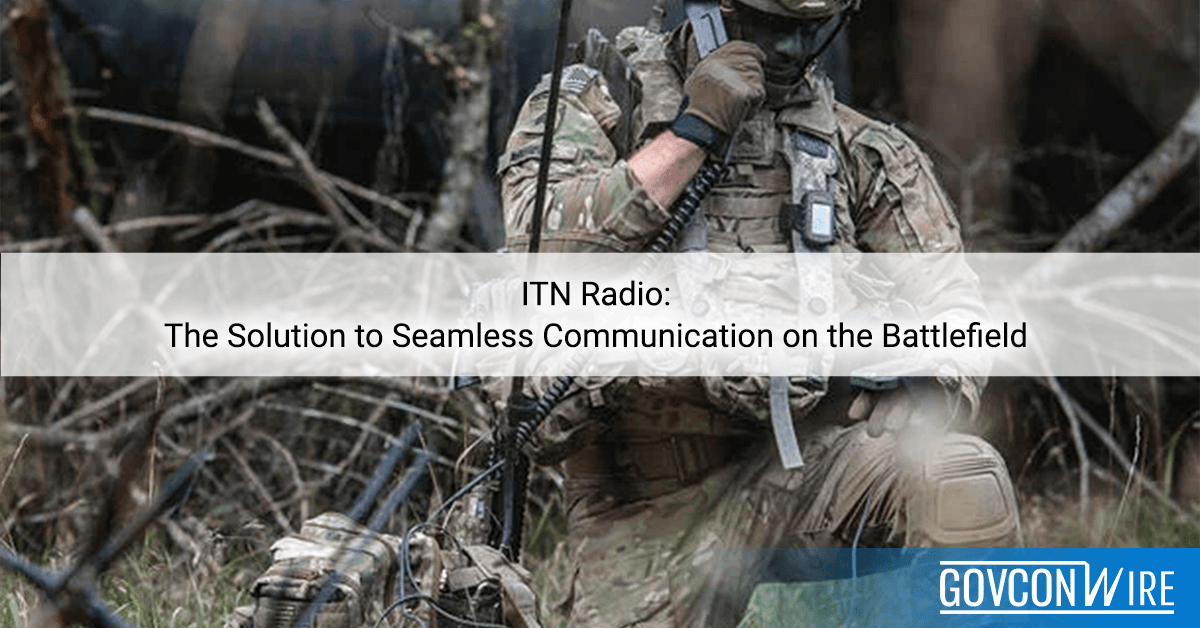The Integrated Tactical Network, better known as the ITN radio, is a “critical component” of the U.S. Army’s Unified Network Plan. It provides voice and data communication capabilities to tactical units in challenging environments to form a converged and reliable tactical network.
Given that the U.S. Army’s current and future combat systems, munitions, and mission command are deeply intertwined on tactical networks, the ITN radio is pivotal to maintaining the military’s tactical advantage against global competitors such as Russia, China, and North Korea.
Keep reading to know what ITN radios are and how they work.
What Is ITN Radio?
Photo by Saab from C4ISRNET
The integrated tactical network radio is a portable network of small military units that enable better communication and coordination during missions. It uses a mix of military and commercial technologies to create a reliable network that can be set up quickly in different environments.
The ITN’s product cycle is updated every two years through capability sets (CS). These updates allow the military to continuously experiment using the latest technological advancements and adapt to emerging threats.
The current version of the ITN radio, Capability Set (CS) 21, includes single- and two-channel radios, smartphones for soldiers, and a box called the Tactical Radio Integration Kit (TRIK) to connect all the radios. Satellite terminals, antennas, and other equipment command centers and vehicles are also a part of CS 21.
The ITN radio is developed to ensure that different units can communicate with each other during missions, even if they’re using different types of equipment. It aims to increase network mobility, decrease reliance on satellite services, and reduce communication systems’ size, weight, and power requirements.
How does ITN radio work to improve communication among soldiers?
Photo from Air & Space Forces Magazine
The ITN in action was seen through the deployment of Capability Set 21 in the 82nd Airborne Division’s 1st and 3rd Brigade Combat Teams and the 25th Infantry Division. It started rolling out at the U.S. Army’s 101st Airborne Division in 2024.
Additionally, the ITN is being tested with Silvus StreamCaster MANET radios for expanded deployment in the Army’s ITN Operational Demonstration Phase II testing for FY 2025. These ongoing efforts seek to validate and improve the ITN’s capabilities in real-world scenarios where communication needs to be fast, reliable, and adaptable.
Here’s how the ITN radio works to improve military communication.
Software-defined radios and multi-band capability
The ITN uses software-defined radios (SDRs) that work on different frequencies across different environments. Soldiers can communicate with each other even on different devices or in different places.
For example, TrellisWare’s TSM radios and Silvus Technologies’ AN/PRC-169 StreamCaster radios allow soldiers to communicate within their platoons and connect in command posts with clear voice, data, and video communication through ITN.
Mobile broadband and satellite communications
The ITN has special equipment to help soldiers stay connected even in places without internet or cell services. These tools include mobile Wi-Fi systems and satellite antennas from companies like 4K Solutions, Hoverfly, GATR, and Tampa Microwave.
With this setup, soldiers can use Electronic User Devices (EUDs) to connect to the ITN via Wi-Fi or satellite signals instead of relying on radio frequencies. This setup is helpful in areas with little to no mobile broadband infrastructure.
Interoperability and coalition operations
The ITN facilitates collaboration among the military forces of U.S. allies. It is made possible by using common operating systems, such as the Tactical Assault Kit (TAK) server software. It equips the ITN to support shared situational awareness and collaborative planning among the U.S. Army units and allies.
Enhanced security and spectrum dominance
Advanced security features and spectrum dominance capabilities allow the ITN to thrive even in hostile environments.
StreamCaster radios acquired by the U.S. Army use Silvus’ proprietary Mobile Networked MIMO (MN-MIMO) waveform, which creates a self-organizing mesh network compatible with different spectrum bands and sends data quickly.
In addition, Spectrum Dominance’s advanced interference avoidance and cancellation capabilities enable Silvus StreamCaster MANET radios and the MN-MIMO waveform to work effectively in congested spectrum environments.
What are the limitations of the ITN radio?
Despite the improvements in communication brought by the ITN radio, there is still plenty of room for improvement.
Integration challenges
Adding new radios and communication gears to existing military vehicles and aircraft can be difficult because their available spaces and power systems are limited. It is especially tricky when upgrading ground vehicles and aircraft with advanced communication systems.
The Program Executive Office Command, Control, Communications-Tactical (PEO C3T) is tackling these challenges with the ground vehicle and aviation communities. This teamwork identifies and solves integration problems, ensuring that new communication gear can be added without compromising their existing capabilities.
Survivability
Assessing how well the ITN can survive in a challenging cyber and electromagnetic environment requires thorough testing and evaluation strategies. If a critical communication device is damaged, commanders may find it challenging to give orders or get updates on enemy movements or friendly positions.
Therefore, conducting comprehensive exercises at a brigade level and using all the CS21 ITN equipment are essential to ensure readiness in these situations.
Fiscal constraints and production capacity
Equipping a whole Brigade Combat Team (BCT) with ITN gear can cost between $200 million to $400 million. Even ordering MANET radio kits for a full BCT, installation, and support could cost $20 million to $30 million. These cost limitations and production capacity constraints make it challenging to deploy the ITN rapidly.
Latest news on the ITN radio
1. The U.S. Army’s Unified Network Plan is working toward modernizing communication for multi-domain operations (MDO), where the Integrated Tactical Network (ITN) is a key part. After three years of prototyping, the Army started giving network capabilities to important infantry, Stryker, and division headquarters in October 2023. The ITN doesn’t replace any current networks but gives commanders more communication choices.
2. In October 2023, the Army bought 7,000 RT-2129 combat net radios (CNRs) from Thales to improve battlefield communication. This purchase is part of a $6 billion contract to replace the older Single Channel Ground and Airborne Radio System. The CNRs are built to be easily integrated with the ITN and to work well even in extreme conditions.
3. In March 2024, the Army tested high-altitude drones to expand its network range using the aerial tier network extension concept. It is developed to improve connectivity, especially in dense forests or mountains.
For example, drones like the K1000ULE, which can fly at 18,000 feet for extended periods, were used to make stronger networks in dense forests and mountains. In line with this, the Army is exploring different drones and air vehicles to create a more robust network and ground cover.
4. In March 2024, the U.S. Army started exploring more adaptable ways to buy equipment and as-a-service models amid changing threats and technologies. Upgrades to tactical networks, like the ITN, have used middle-tier acquisition to add new technologies as they emerge.
This strategy helps the Army modernize its buying process to meet the fast-changing needs for hardware and software. An example is developing capability sets (CS) that require updating the radios’ technologies every two years.
Read more: 10 Anti-Drone Weapons Used By The U.S. Military















